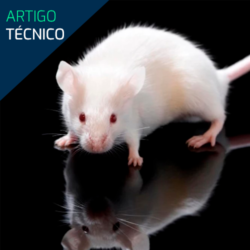[vc_row full_width=”stretch_row_content_no_spaces” css=”.vc_custom_1656966254817{padding-top: 300px !important;padding-bottom: 220px !important;background: #a3a3a3 url(https://steq.com.br/wp-content/uploads/2022/07/2000x577_-bannerblog.png?id=7069) !important;}”][vc_column][vc_column_text][/vc_column_text][vc_separator color=”sandy_brown” border_width=”3″ el_width=”10″][/vc_column][/vc_row][vc_row css=”.vc_custom_1564073259210{margin-top: 25px !important;margin-bottom: 25px !important;}”][vc_column width=”3/4″][vc_column_text css=”.vc_custom_1657019837672{padding-bottom: 20px !important;}”]
Debates involving the loss of drugs or samples, due to inadequate storage conditions, are always present. It is a fact that the solution is relatively simple, after all it all comes down to quality and performance. Home refrigerators are definitely not good enough when it comes to storing temperature-sensitive material. The idea that a conventional refrigerator or freezer is as good as any other is not true. So, the question remains: is it really that difficult to maintain a stable and uniform temperature in all equipment?
Yes, it really is!
In an industry where large amounts of valuable materials are stored, it is important to question whether a refrigerator or freezer intended for food preservation, for example, is suitable for storing medicines or samples. ARCTIKO is dedicated to developing and manufacturing the best cold chain solutions, including:
- Refrigerators
- Freezers and Ultrafreezers
- Cryogenic Freezers
The entire line of equipment is designed for use in laboratories, biobanks and hospitals and is completely different from the models used in homes. ARCTIKO equipment is intended to store:
- Samples
- Organic material
- Pharmaceuticals
- Vaccines
6 golden tips for choosing the perfect Refrigerator or Freezer for your laboratory

1. Temperature
The temperature range of your equipment is probably the most important feature you need to consider. This is usually set according to what you want to store on the drive and for how long. Laboratory freezers typically come with a temperature range of -10°C to -30°C, but some units offer a more specialized range, such as -18°C to -40°C or even -25°C to -86°C. Ultra-low freezers, designed to preserve biological samples, typically range from -40°C to -90°C. And finally, the cryogenic unit reaches down to -150°C. There is never just one temperature in a piece of equipment, after all, its construction and internal airflow cause small temperature changes. In addition, the temperature is influenced by the environment, the door openings, the amount of material stored and the way the refrigeration system is built. The best possible temperature uniformity within a piece of equipment can be achieved through the even distribution of forced air, which minimizes hot and cold spots. According to the National Institute of Standards and Technology (NIST), when vaccines are stored at the wrong temperature, bureaucratic and costly revaccination efforts can be necessary, which put communities at risk and shake the confidence of this public.
2. Temperature logging, monitoring, and alarms
Alarms are one of the most important features, as they alert the user if there is a problem with the equipment. This is especially important in case you’re not on-site, as large temperature fluctuations can harm samples, medications, and vaccines, just to name a few – which can lead you to discard them. Alarms come in a variety of types. There is the simple acoustic and visual alarm that all ARCTIKO products are equipped with, but there are also chart recorders, Modbus alarms, loggers that help maintain a safe and stable environment for your cold storage needs.
3. Maintenance
ARCTIKO instruments are reliable partners for your laboratory, but in order for them to operate at their maximum capacity, they need your help. Equipment needs to be defrosted periodically, as well as its moving parts such as seals, seals and other rubber parts, which must be cleaned with a non-abrasive cloth.
4. Size/Capacity
What is the storage capacity that your laboratory demands? It is very important that you evaluate what you need at the current moment, but predicting future needs is also essential, as the useful life of most ARCTIKO equipment is more than 10 years. If you’re looking for a space-saving design, consider the smaller countertop models – like the P50 or P90 ULT freezers. It’s important to note, however, that refrigerators – regardless of what they’re storing – work best when charged to a capacity between 30% and 80%.
5. Optional Laboratory Refrigerator Components
You may also want to consider some optional components depending on your type of research and your lab’s needs, such as:
- Glass x Solid doors for a better overview
- Additional shelves – configured according to the item to be stored
- Locks
- Extra security features such as a chart recorder or data logger
- Drawers and baskets
- Extra sensors
6. Explosive Atmosphere
When handling or storing flammable items in a biomedical refrigerator or freezer, there will be a possible risk of ignition. Therefore, ARCTIKO recommends storing flammable items in an ARCTIKO ATEX-approved refrigerator or freezer, which are constructed in accordance with EN 60079-15 CATEGORY 3, ZONE 2, CE EX 11-/3G.
Learn more at: https://www.arctiko.com/[/vc_column_text][/vc_column][vc_column width=”1/4″][vc_basic_grid post_type=”post” max_items=”3″ element_width=”12″ gap=”15″ item=”958″ grid_id=”vc_gid:1657019746859-3784ef42-4139-6″ taxonomies=”4, 1, 5, 3″][/vc_column][/vc_row]




